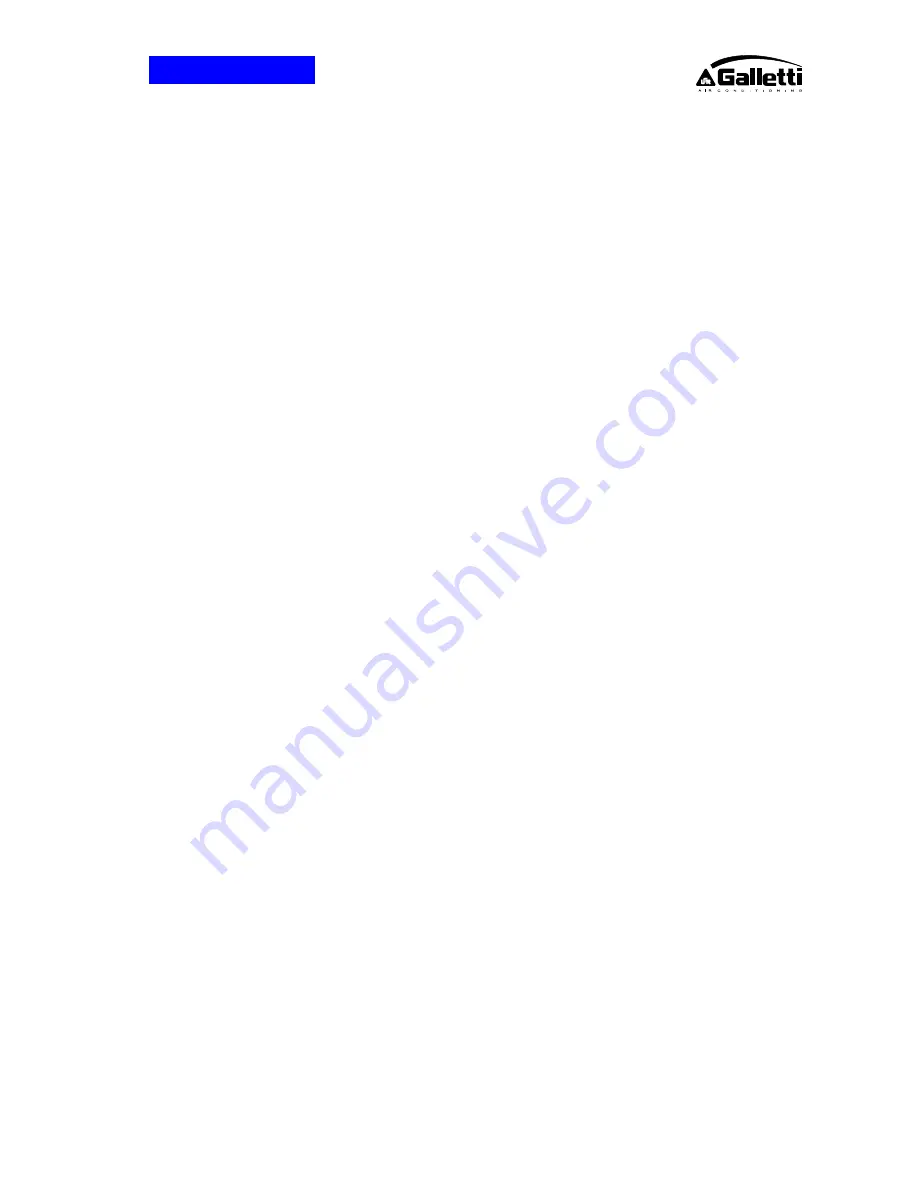
RG66001652_REV.02
29
LCW - LCR
Glycol solutions
It is possible to produce water at temperatures below 5°C and as low as -10°C using glycol solutions that
lower the freezing point according to the following table:
Minimum temperature of water produced
5 °C
2°C
-1 °C
-5°C
-10 °C
Percentage of ethylene glycol (in weight)
0 %
10 %
15%
25 %
30 %
Freezing temperature of mixture °C
0 °C
-4 °C
-8 °C
-14 °C
-18 °C
Given an equal volumetric flow rate of water, pressure drops will depend on the percentage of glycol, as
shown in the following table:
Percentage of ethylene glycol (in weight)
0 %
10 %
15%
25 %
30 %
Pressure drop change
0 %
+12 %
+ 21 %
+43 %
+55 %
Operating limit table
thermal carrier fluid water or water/antifreeze mixtures
maximum water operating pressure 6 bars
Maximum operating P – High pressure side
= 28 bar-r
Maximum operating T – High pressure side
= 125° C
Maximum operating T - indoor environment
= 50°C
Minimum operating T
= -10°C
Maximum operating P – Low pressure side
= 22.6 bar-r
Supply v/- 10% of rating plate voltage
Maximum stocking T
= + 50 °C
Minimum stocking T
= - 10 °C (limit imposed by the built-in electronic
components)
(*) this value can be reached only in storage conditions and determines the refrigerant saturation
pressure of 22 bar-r on the low pressure side of the circuit, a value which in fact defines the limits.
Water flow to evaporator
The nominal flow rate is based on a thermal differential of 5° C between inlet and outlet water, in relation
to the cooling capacity provided at the nominal water temperatures (12/7 °C).
The maximum allowed flow rate is associated with a thermal differential of 3 °C. Higher flow rate values
cause too big pressure drops.
The minimum allowed flow rate is associated with a thermal differential of 8 °C. Lower flow rates could
cause excessively low evaporation temperatures, which would trigger the safety devices and cause the
unit to stop.






























